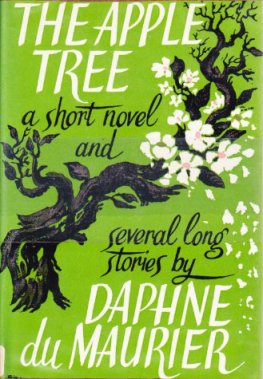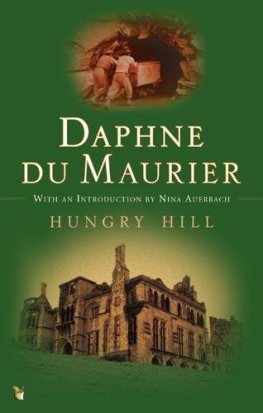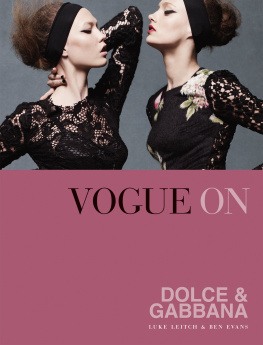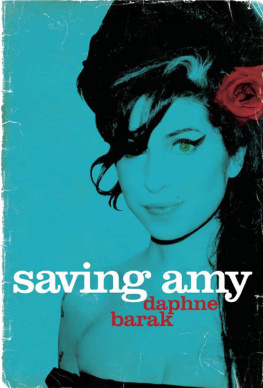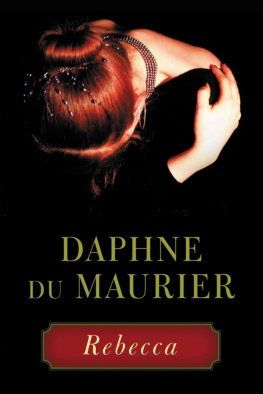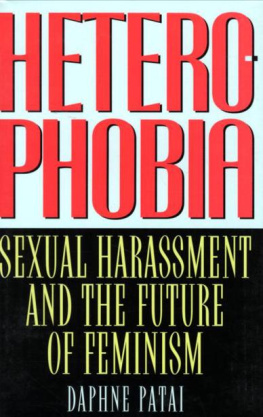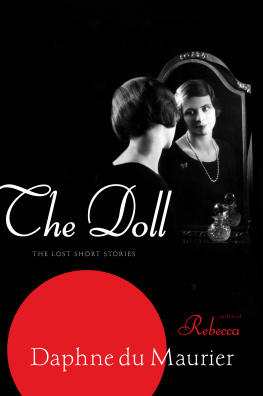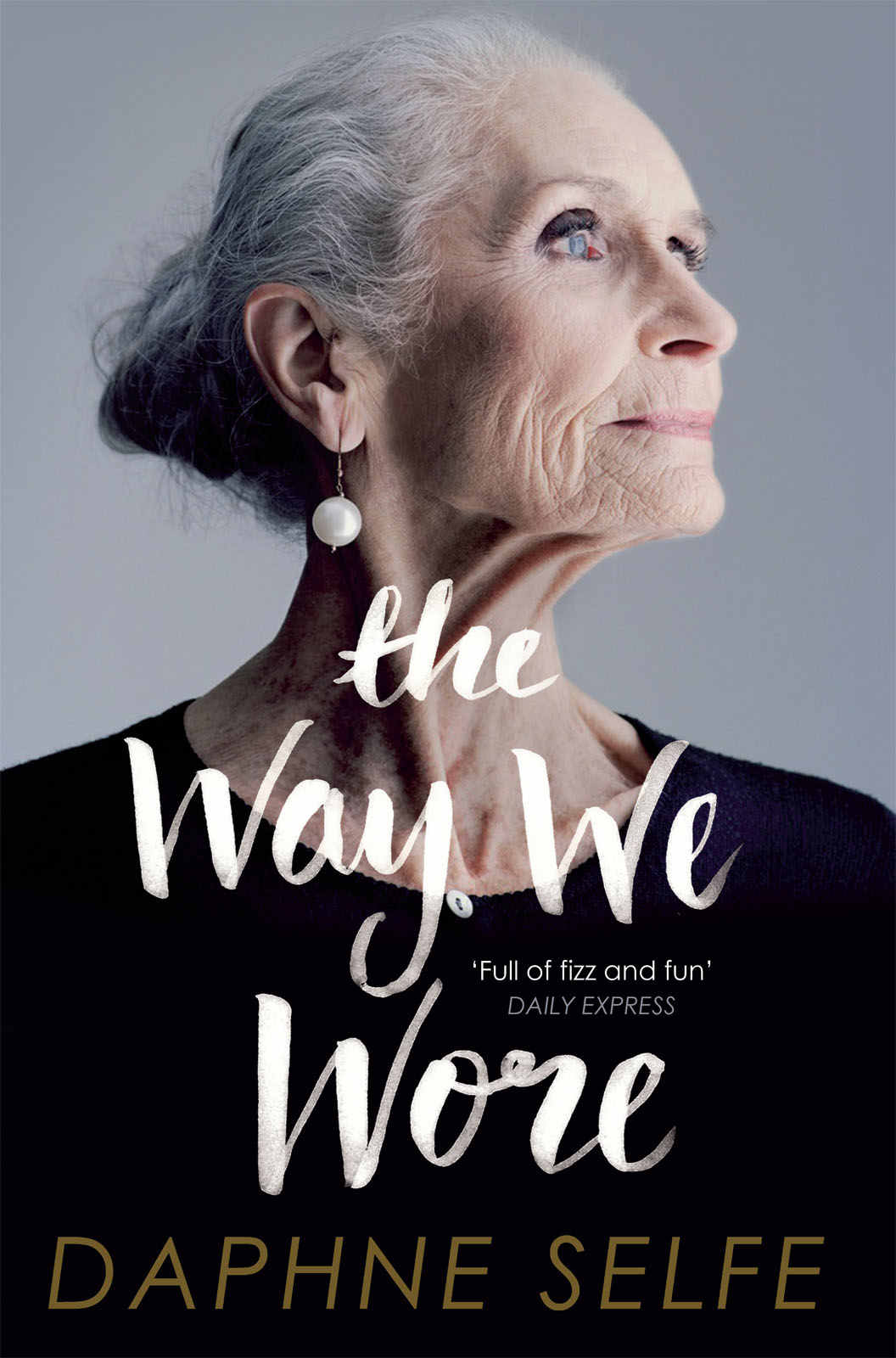D APHNE S ELFE
The Way We Wore
A Life in Clothes
PAN BOOKS
For my grandchildren
Robin, Grace, Alec & Jack
Contents
Introduction

Nick Knight, one of the worlds leading photographers, is doing a shoot for Vogue. The model is posing in a scarlet Hussein Chalayan dress so figure-hugging that she cant wear any underwear. The famous hairstylist Sam McKnight has done her hair in a Grecian style and she has bare feet. Theres nothing unusual about this scene except that the model is me and I am seventy years old.
This was 1998. Suddenly as an older model I was in fashion literally and I was enjoying every minute of it. The stylist and I couldnt stop giggling as we tried out different ways to wear my very clingy jersey dress. After several false starts we got there without disrupting my hairdo, but the knickers had to go, as anything under this particular outfit showed an unwelcome line.
It was all very unexpected. If you had asked me twelve months earlier what I thought I would be doing in a years time, the very last thing I would have said was, modelling for Vogue . What is so strange is that I was discovered once, at twenty-one, when I was chosen for the cover of Reading Review magazine, a job that led to several successful years as a model in 1950s London. Then I was discovered again at seventy, when I was enlisted to walk for the designers Red or Dead during London Fashion Week and subsequently asked to model for Vogue . Having two bites of the cherry in very different eras has been quite fascinating, as modelling and everything else had changed so much in fifty years.
Mine is not a rags-to-riches story, nor have I had to overcome incredible odds. I have just been lucky and able to appreciate the amazing chances and coincidences that have come my way. It has been an ordinary life in which extraordinary things have happened, and it has encompassed nearly a century of fashion along the way, especially as I have always been interested in clothes. So this is the story of my life and style, from the day my parents met over a single Gibson shoe to my latest campaign for a major clothing company, taking in Diors New Look, Courrgess shift dresses and 1970s flares and bell-bottoms to name but a few in the process.
Seventeen years after that Vogue shoot, now aged eighty-seven, I am still busy modelling and still amazed.
ONE
One White Shoe

It wasnt a glass slipper it was a white canvas shoe with a single strap, a narrow toe and a low, curved Louis heel, the type of shoe that every stylish young woman was wearing in the summer of 1915. Yet it had just as much symbolic significance in my family story as Cinderellas lost slipper because, without it, my parents might never have met.
The shoe was known as the Gibson, a classic style that epitomized the footwear of the glamorous Gibson Girl illustrations in the American magazine Harpers Weekly a very clever piece of promotion! One afternoon, it fell off a hotel balcony in Lowestoft, Suffolk, and landed on the next floor down, where it was discovered by a schoolteacher in his mid thirties who probably wouldnt have been able to distinguish it from a Mary Jane or an Oxford.
A quiet, unassuming sort of chap, Francis Selfe was in Lowestoft enjoying the famous beaches, piers and sunrises with his brother and sister-in-law, just back from India, and their six-year-old son John. Lowestoft was the place to go in those days. It had been fashionable since the 1760s, when the first bathing machine was introduced, and in the first half of the twentieth century it competed for popularity with East Anglias other hotspot, Cromer.
Francis rescued the shoe from his balcony and set off upstairs, where he knocked on the door of the rooms above his.
I was wondering if this belonged to anyone here? he asked shyly.
Whose foot would fit the dainty shoe? Among the guests on the next floor up were several members of a large family called the Garraways and, as luck would have it, the youngest of them stepped forward to claim it. She was a radiant twenty-two-year-old named Irene, affectionately known as Babie a real Irish beauty, with auburn hair, deep-set blue eyes and high cheekbones. Just a few minutes earlier, she had cleaned her shoes and put them out on the balcony in the sun to dry, only for one of them to topple off the side.
Yes, its mine, she said with an apologetic smile. Im sorry to cause you the trouble of coming up here.
Not at all, he murmured, trying not to stare. Its no trouble.
By the time my father got around to introducing himself, he was already in love, but it wasnt going to be Happy Ever After quite yet. The two families struck up a friendship and spent pleasant hours promenading together in the sunshine and at some point he proposed to my mother. But she turned him down.
Decades later, I could tell by the way they recounted their first meeting that there had been an immediate spark between them, but Mummy was already inundated with suitors. Her admirers included Marconi, the inventor of the radio, and she had been painted by the fashionable portrait painter Gerard Leigh Hunt. Considered a great beauty, feted by everyone, she was in a position to be selective and perhaps my father was a little old for her. It was, after all, a gap of fifteen years. She didnt think it a good idea to marry an older man. Still, they stayed in touch when the holiday ended.
Daddy couldnt go into the war because of his poor eyesight, so became a Civil Defence Warden and carried on his teaching career. He wrote regularly to my mother during the war years. People wrote a lot of letters in those days. I wouldnt think she bothered to reply or not very often, if at all. Their paths may even have crossed at the occasional salon or soire, where my mother would sing and play piano. She was a superb musician and singer. Either way, he would have been painfully aware that over the next few years she was busy getting engaged to other people.
Her first fianc was Harry Satterford. Then she was engaged to Tom Cade. Both men were cruelly killed in the war. I have no idea how deeply she was affected by their deaths, partly because more than two decades had passed and another war was upon us by the time I got to hear about it. Even then, I wasnt told much and it wouldnt have done for me to ask. It was off-limits somehow. People didnt talk about their feelings. So I dont know if her heart was broken once, or twice, or if she simply got caught up in a whirlwind of romantic farewells on station platforms, barely knowing the men she promised to marry when they got back from the Front. Engagement was a very loose term in those days. You had to practically get engaged to somebody before you went out with them. The social code was different it was a different world altogether with so many men being killed, something that all the young British women of the time had to contend with. Many of my aunts and their friends remained spinsters for the reason that most of the eligible men went away and very few returned.
There were other changes to adjust to. Women were required to work during the war years, and Mummy got a coveted position at the Bank of England by virtue of her beautiful handwriting. This was a complete turnaround, as my grandmother hadnt allowed her to get a job when she left school. The Bank was very security-minded and she was locked in a cage for hours on end while she laboured away writing up the ledgers, but at least she could look forward to an amazing seven-course dinner at the end of the day. Everyone else was starving but the bank people had a banquet every evening.


